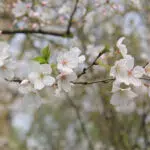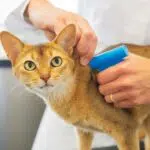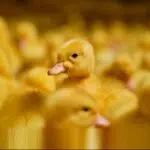Gardening for Wildlife Month, held in May each year, aims to get more people to celebrate and honor local flora and fauna. Celebrations in this month center around building more wildlife-friendly gardens, tips on how to do so, and inspiring stories from people who’ve successfully created such green spaces. Gardening for Wildlife has attracted attention from various people and groups, including many celebrities, who believe this to be a creative way to delicately balance our ecosystem and the environment.
History of Gardening for Wildlife Month
A devastating byproduct of human growth has been the loss of natural habitats everywhere around the world. Wild animals and plants can no longer rely on woodlands, marshes, and ponds — these places have been slowly disappearing to make way for roads, homes, factories, etc. As a result, wildlife that was once thriving is now facing multiple threats, and their populations are dwindling.
That’s when, over time, studies began to be conducted to find a solution to this concerning issue. Since private residential property took almost one-third of the urban landscape in many developed nations, one way to revive the wildlife was to plan urban gardens that would be completely wildlife-friendly.
A key organization leading the development of these ‘wildlife gardens’ was the National Wildlife Federation, which began operations in 1973 and has been pushing for a wildlife-supportive gardening method ever since. They’d even conducted 24 studies on the impact of wildlife gardening, all of which clearly showed that such places do indeed boost biodiversity, help wildlife ecosystems thrive, and supplement natural resources when local plants and trees are planted. These places are also almost always home to twice as many species of birds as areas without such gardens.
People who’ve had their homes and backyards turned into wildlife gardens witness this phenomenon first-hand. They’ve recounted tales of seeing local species of animals along with many migratory birds and butterflies, many of whom return to this safe haven year after year.
For now, wildlife gardens are seldom-seen backyard designs for many homes across the U.S. This month is aimed at getting people to realize that any garden can be transformed into a wildlife-friendly place. While endangered animals — think otters and ospreys — might not find a home in your garden, you can be directly responsible for helping swallows, butterflies, frogs, and even local plants thrive in a world where they don’t find many suitable places to live.
Gardening for Wildlife Month timeline
President Nixon signs a landmark wildlife conservation law that protects a comprehensive list of wildlife, becoming one of the United States’ most powerful environmental laws ever created.
The Nonprofit National Wildlife Federation launches a special program — Garden for Wildlife — to encourage more wildlife conservation in backyards and people's immediate surroundings.
“Backyard Habitat” on Animal Planet teaches viewers how to attract and conserve wildlife in their backyards in a D.I.Y.-style format.
National Wildlife Federation’s 'Garden for Wildlife celebrates 45 years of helping people conserve wildlife locally.
Gardening for Wildlife Month FAQs
What habitat is a garden?
A garden is a somewhat controlled area that provides a place for various plants and animals to live. Those attached to homes are usually thought of as ‘backyards’ or ‘front yards.’
How do you make a wild garden?
Gardening for wildlife includes choosing plants and trees that attract local wildlife, planting flowers, growing climbers, and maybe even placing a bird box or bird-feeding area. You can even let some shrubs and grass grow a little unwieldy to create nesting areas for smaller animals like hedgehogs, frogs, and even some birds.
How do you make a small garden wildlife-friendly?
Turning your garden into a wildlife-friendly space can be as simple as keeping bowls of water for the wildlife or as complex as building a compost solution for healthy plant growth.
Gardening for Wildlife Month Activities
Turn your garden into a wildlife haven
Build a space where animals, birds, and other creatures feel at home. Plant a variety of flowering shrubs, grow a tree, and maybe even put it in a little pond. Take help from various online sources to help you plan the best green space for your backyard.
Go loco for local
Much of wildlife gardening revolves around protecting local wildlife. Planting native plants and trees to attract local wildlife is a great way to create local ecosystems without harming the biodiversity of your region. Local gardeners, online sources, and a bit of research will help you here too.
Get involved with external wildlife gardens
Know of any wildlife gardens near you? Why not check it out, then check to see if they need volunteers for any tasks? You can also pitch to have these gardens created at local spaces like the park, the school backyard, or even a local community center. It can be as easy as planting more native plants or as challenging as trying to create little ecosystems for various animal and bird species.
5 Interesting Facts About Gardens And Wildlife
An insect haven
More than 8,000 different insects are likely to call your garden home — and most of these are utterly harmless and can actually be helpful to you and your plants.
Flower power
One way to create a butterfly habitat is to plant myriad flowering plants, as they winged wonders — and moths — feast on almost any flower's nectar.
Love the frogs
Don't get rid of frogs or toads, as they are nature's pest control — they munch on different worms and other mini-insects, keeping that population in check.
No need to go wild
Wildlife-friendly gardens don't need to look wild; an ordered green space that has a healthy and balanced bunch of flora is enough to attract wildlife.
One space, many ecosystems
One garden can hold thousands of ecosystems — there can be a special space for birds, one for insects, another for critters, and of course, multiple spaces for invertebrates.
Why We Love Gardening for Wildlife Month
You're helping out the environment
Planting — with a purpose — is greatly helping the local wildlife survive and thrive in a safe space. Plus, research also shows these little spaces make a necessary 'corridor' between larger protected areas for all migratory species like eagles, tree sparrows, etc.
We've got our own green space
It's a tiny green lung in the middle of all the concrete and pollution. Even the smallest of these wildlife gardens contribute towards making your homes and immediate surroundings more green, which is never a bad thing.
Gardening for wildlife helps humans too
No one can deny spending this much more time in nature — the gardens will need your love, care, and attention — is very rewarding for owners too. They're benefitting from better oxygen levels in their immediate surroundings, they see bright colors every day, and they’re calmer and less stressed due to the presence of the wildlife.
Gardening for Wildlife Month dates
| Year | Date | Day |
|---|---|---|
| 2026 | May 1 | Friday |
| 2027 | May 1 | Saturday |
| 2028 | May 1 | Monday |
| 2029 | May 1 | Tuesday |
| 2030 | May 1 | Wednesday |











































































































































































